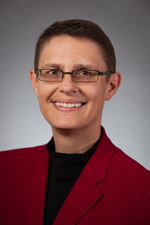April 6, 2015
Inspiring Advocacy
Many state legislative seasons are reaching their peaks in April. Elected officials are moving bills through the pipeline and putting the finishing strokes on budget packages, all while navigating last-minute political twists and turns. At this time of year, arts advocates are channeling the same skills that are taught in NASCAR driving school: “Master your acceleration and high-speed steering techniques! Practice slides, recoveries, lane tosses, braking and accident avoidance maneuvers!”
In recent weeks I’ve discussed numerous legislative developments—some favorable, others ominous—with arts leaders from around the nation. Those conversations concentrated on practical tactics:
- messaging: getting advocacy arguments “right and tight”
- representation: selecting messengers with the right balance of credibility, influence and persuasive skill
- evidence: foregrounding the most compelling data
- aperture of action: choosing whether to focus on one key individual, on a group or more broadly on a legislative body
- timing: choosing what times in the policy process to exert leverage
Igniting Advocates’ Passions
Coordinating all of the above, especially in a compressed time frame, is the first order of business when presented with either a policy opportunity or a policy crisis. But there’s one more essential ingredient that shouldn’t be overlooked. That’s inspiration—the kind of inspiration that doesn’t simply affirm the arts but specifically empowers your supporters to feel good about being advocates for the arts. As much as I like data (and y’all know I really like data), pride and passion can be far more powerful motivators than numbers.
I had the chance to see some great inspiration during Arts Advocacy Day in Washington, D.C., last month. Arts Advocacy Day is coordinated by our good colleagues at Americans for the Arts, and NASAA is an annual national cosponsor. After nuts-and-bolts training on the previous day, advocates converged on Capitol Hill for the Congressional Arts Kick-Off breakfast directly before making visits to their state delegations. Elected officials, artists and cultural agency leaders all lent gravitas to this gathering. But one speaker—Representative John Lewis from Georgia’s Fifth District—was especially notable for the effect he had on advocates in the room.
Elements of Inspiration
Many of us have heard Representative Lewis speak about the arts before, but this year I gave special heed not just to his remarks but also to how he used his voice. He modeled many useful lessons for arts and civic leaders who seek to inspire advocates, recruit supporters and catalyze action:
- Uplifting oratory: Representative Lewis tells a compelling story of how the arts helped to propel the Civil Rights movement. He notes that music, theatre, dance and film “communicate the heart and soul of a nation.” He underscores the deeply held American value (and the political imperative) of personal participation in the democratic process—a timely theme for grass-roots advocates en route to meetings with members of Congress.
- Credibility: Representative Lewis exudes an authentic personal commitment to the arts as a legislator and an activist. His story is personal and it also captures pivotal moments in our country’s history, connecting his audience to a cause greater than any one individual.
- Simplicity and sincerity: He practices the same good advice he gives to advocates: “Make it plain.”
- Inclusive message: In these remarks, Representative Lewis does not vilify those who oppose funding for the arts. He aims instead for a universal message, invoking American values that transcend political divides. He also is a master of pronoun choice, using “I” to assert leadership, “you” to target his message and “we” to invoke common cause.
- A stirring wrap-up: His conclusion (fast forward to 7 minutes and 30 seconds) uses language, repetition, cadence and imagery to invoke a message of hope, affirm the value of the arts and cheer on those who advocate for them.
We Are Numerous
Powerful and persuasive arts champions exist in every single state. Whether it is done through a well-timed speech, personal interactions or an on-line community, it’s useful for them to reinforce—to advocates and lawmakers alike—that arts supporters are not an isolated minority fringe. We are numerous. We are committed enough to show up. We hail from all geographies and occupy all conceivable points on the political spectrum. We live, work and raise our families in the very same communities as our representatives themselves do. And for all of us, as John Lewis says, the arts embody our “greatest hopes, our persistent courage and our highest inspiration” as individuals, as states and as a nation.
Let’s work together to make those convictions contagious.
In this Issue
State to State
- Florida: Poet Laureate Program Renewed and Formalized
- Utah: Arts and Culture Business Alliance
- D.C.: MuralsDC
Legislative Update
Executive Director's Column
Research on Demand
SubscribeSubscribe
×
To receive information regarding updates to our newslettter. Please fill out the form below.

